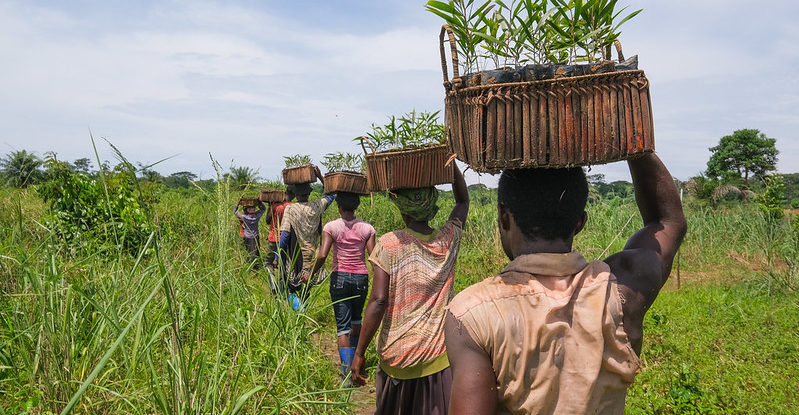
Anna Begemann is a researcher in the Governance Program at the European Forest Institute.
From deforestation largely caused by agricultural encroachment in the Amazon, to devastating forest fires in Canada, Siberia and many other areas around the world: forest destruction has become headline news worldwide in recent years.
A range of global and regional forest policy initiatives have created a framework intended to build a positive future for forests.
Yet, due to the sheer complexity of the many economic, social and environmental circumstances that must be tackled, goals have been missed. For example, the New York Declaration on Forests, an international agreement to halve deforestation by 2020 and end it by 2030, failed to meet its target last year.
Without examples of good governance initiatives, policymakers face navigational challenges. Aiming to establish the correct path, we turned to a panel of renowned research and policy experts in a so-called Delphi assessment. Through a series of interviews, surveys and a workshop, they helped us identify 10 ways to shape a positive future for forests worldwide.
- Leveraging supportive regulatory frameworks
Currently, experts perceive that multilateral forest governance processes and institutions are slow to make progress. The experts also experience an overall “fatigue” with regards to existing governance structures. Nevertheless, government and state authorities are central to the provision of international and regulatory frameworks, structures and mandates to enable other actors such as companies or nongovernmental organizations to act.
- Building new alliances of “coalitions of the willing”
As the world becomes increasingly diverse, issue-specific coalitions across continents hold big promise to solve forest destruction. Alliances would involve countries willing to advance certain aspects of global forest governance.
- Using salient issues as leverage
Initiatives that link forest issues with non-forest sectors and topics high on political agendas can ignite change. They bring political visibility, commitment and the possibility of building alliances with critical policy sectors. One example is the European Union’s Forest Law Enforcement, Governance and Trade Initiative (FLEGT) which is perceived as the most promising initiative overall by the participating experts.
- Advancing global forest governance through sustainability leadership by governments
Sustainability leadership by individual governments can lead the way on improving forest governance globally. In particular countries which implement advanced sustainability standards focused on forests and (e.g., biodiversity conservation, climate impacts) have the potential to become catalysts for change. States that pick this up more quickly might have an advantage in contributing to shape the transition and to lead by example.
- Mainstreaming responsible investments
The financial sector plays a key role in tackling deforestation and forest as many financial institutions are directly or indirectly financing soft commodity companies through loans and investments.. demands from consumers and institutional investors for sustainable investment products and projects to invest in might trigger more sustainability in the financial sector and forest investments that are supporting good forest governance.
- Using trending topics and political momentum to achieve long term goals
New initiatives and , like zero deforestation and forest landscape restoration, hold the potential to address unsolved challenges. At the same time, technical knowledge and established networks are needed to avoid short-term symbolic policy solutions. Instead of competing with already existing initiatives, new initiatives should strengthen already existing work.
- Acknowledging informal markets
A large part of the global forest economy is characterized by informal activities, employment, and the livelihoods of forest dependent people. International and regional organizations, governments as well as global forest governance initiatives need to address these issues to be successful in their work considering the advantages and disadvantages of formalizing the informal sector.
- Clarifying and devolving inclusive tenure and use rights
While there is an increased awareness of the need to clarify (forest) land tenure rights, devolution is still a contested matter between different tiers of government in many countries. Further support from the international donor community, including Official Development Assistance (ODA) provider agencies and ministries, will have to be applied to accommodate existing concerns, including state sovereignty.
- Supporting inclusive “glocal” decision-making
Global forest governance decision-making has largely been exercised by governments without the meaningful participation of local communities, civil society and private businesses. More “glocal” modes of decision-making with meaningful participation of key stakeholders have the potential to substantially increase the legitimacy of global forest governance efforts.
- Addressing “big data” to navigate opportunities for transparency and risks
New technological developments such as remote sensing, software using algorithms to analyze large datasets such as trade data and the application of new information technologies by large numbers of people, can greatly increase the transparency of global forest governance initiatives. Yet, these developments also entail risks, as private companies and governments can potentially manipulate or misuse big data, increasing the risk of inequity and surveillance.
The bottom line of these 10 ways is a call for more coordination and cooperation between different actors addressing new and old topics such as responsible investments or land tenure to eventually achieve change. As a researcher, I believe that transdisciplinary research can help to connect science and policy to ensure knowledge exchange and to frame discussions on how a positive future for forests could be designed.
We want you to share Forests News content, which is licensed under Creative Commons Attribution-NonCommercial-ShareAlike 4.0 International (CC BY-NC-SA 4.0). This means you are free to redistribute our material for non-commercial purposes. All we ask is that you give Forests News appropriate credit and link to the original Forests News content, indicate if changes were made, and distribute your contributions under the same Creative Commons license. You must notify Forests News if you repost, reprint or reuse our materials by contacting forestsnews@cifor-icraf.org.